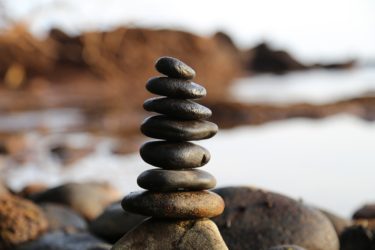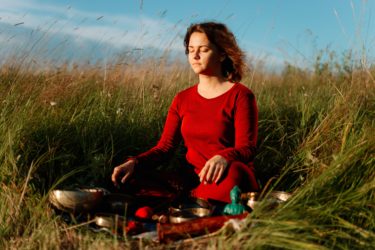Swirling leaves, animals foraging to prepare for cooler months ahead, children laughing, running, and jumping into piles of fallen leaf litter – these are the images of autumn, the most Vata time of year. In Sanskrit, the root of the word ‘Vata’ means ‘to move’. This time of year summons images that reflect this movement through principles of mobility and activity in the body, in both mental and biological processes. In the physical body, this is manifested through the movement of food through the digestive tract, and through thoughts and emotional states in the mental and emotional bodies. As seasons change, we need to continue to keep our body in balance. In this article we discuss, Yoga to Balance Vata Dosha in the Fall season.
If one’s primary constitution, or Prakruti, is Vata it can become easily aggravated during the autumn months, as like increases like in Ayurveda. As a counter to the light, airy, and mobile qualities of this time of year, we can bring balance to the body and mind by integrating grounding and rooting qualities into our asana practice – slowing down our pace, bringing a quality of solidity and fir mness.
mness.
The doorway to these qualities in a yoga asana practice is through the feet. As our literal connection to Earth, our feet transmit an immense amount of information to the rest of the body. Dense in Fascia (a connection tissue or Dhatu that runs throughout the entire body), the Retinaculum (particularly dense bands of fascia found on the tops and bottoms of the feet and around the ankle) found in the feet send messages to our nervous system. These messages include structural alignment, nervous system up- or down-regulation, and position in space. As we learn to bring our awareness and attention to our feet, we can calm the nervous system, and increase feelings of groundedness and centeredness, helping to pacify the tendencies of Vata.
Try Yoga to Balance Vata Dosha in the Fall Season
How can I integrate this into my asana practice, you might be wondering? Here are a few simple tips to do so:
- SLOW DOWN, way down. Try practicing two times more slowly than you might normally be inclined to. If you usually practice a ‘power flow’ or ‘vinyasa’ style, try slowing down the pace of your flow and focus on integrating fluidity and strength
- Tuck the toes in poses you might not normally do so (Camel/Sstrasana, Table Top/Cat-Cow, Low Lunge/Anjaneyasana, Child’s Pose/Balasana, and Extended Puppy Pose/Uttana Shishosana) .
- Add in softer movements, spiraling and wave-like patterns to bring more Kapha through elements of Earth and Water. Spiraling movements can soothe the nervous system as a counter to more linear, tapas (fire building) inspired movements. For instance, try taking the arms in an L position in a low lunge. With your right foot forward, left arm vertical and right arm out the side, reach towards the right, then back through center and over to the left a few times, bringing the right arm vertical and left arm out to the side as you do so. Pause and notice the effect of the spiral action on the spine and nervous system.
- Focus on your Root Chakra, or Mulhadara, and poses to support bringing energy to that area of the body. Some examples would be Warrior I/Virabhadrasana I, Child’s Pose/Balasana,Tree pose/Vrkasana. Focus on rooting into all parts of the feet, literally drawing energy up from the Earth into the body.
- If the weather allows and you can keep the body warm enough in doing so, consider practicing outside in the grass, and allow your body to connect to the Earth in the most literal sense. Nothing provides quite the same level of grounding as the Earth against your skin.
At the conclusion of your practice try a guided visualization to connect even more deeply into Earth energy. In Savasana or a comfortable seated posture, close the eyes and start to settle in. Notice the breath. Feel your pelvis and sacrum in connection to the ground. Feel your back body, and start to imagine you are seated at the base of a large tree, your favorite type of tree.
Visualize the tree in its entirety – what do the leaves look like? What is the bark-like? Imagine the colors and textures of this tree. Feel the support of the tree against your back, or under your seat. Picture a warm red light emanating out from your root chakra, and traveling up through the branches of the tree, and down through the roots of the tree, back into the Earth. Feel this light filling your entire body. Imagine the light seeping out from the Earth and back up to the leaves of the tree in a circle. Know you are held and supported by the energy of the tree, resting in the stability and groundedness of this great plant being. Know that you can return to the safety and support of this tree at any time you feel flighty, airy or out of balance.




